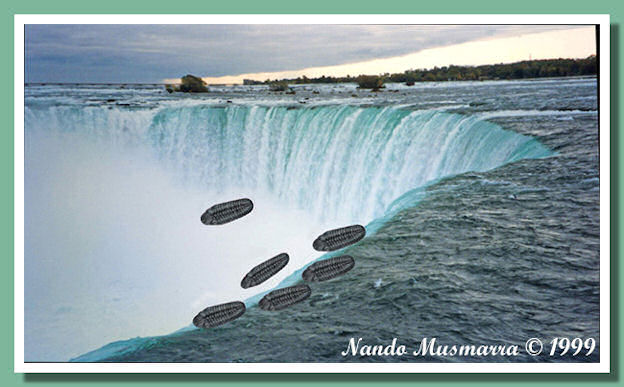Mom, there is a Trilobite in my Sandwich!!!
By Diana Fattori & Nando Musmarra
During our recent trip to the United States, after visiting the always exciting Big Apple, Nando and I decided to rent a car, then we travelled west to visit Niagara Falls. The roaring waters were really impressive,
but being fossil lovers we were looking for an opportunity to look around for fossils. So we turned our car south and we went to the Buffalo Museum of Science, looking for inspiration. Because the museum lies in a very fossiliferous Devonian area, the specialties are mainly fossils from that geologic period, like trilobites and brachiopods from the area around the city of Hamburg. For this reason, we decided to spend the night in Hamburg, which claims to be the city that gave birth and the name to the hamburger, the backbone of every American meal.

Sandwiches... - Photo by Giovanni Cianci
From Genghis Khan's warriors who softened the meat by placing it under the saddles of their horses while riding into battle, to the emigrants by the German Hamburg-Amerika boat line in the 1850s, many people have claimed to be the first to soften, mince, and cook the hamburger, the tasty dish based on minced meat. Well, we don't know what the truth is, but anyway the sandwiches we had in Hamburg's steak house were absolutely delicious: the hamburgers were marinated to perfection, medium cooked with a pink colour at centre, surrounded by pickles, Idaho potatoes and a side of big, tasty blooming onion. Obviously, there is more than a hamburger in the region where Hamburg lies. While in the area, we discovered a wonderful Middle Devonian spot very close to the city, the famous Penn Dixie Quarry.
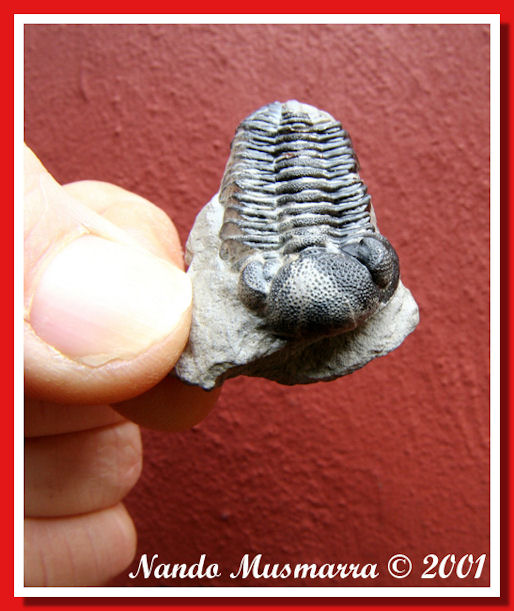
A nice specimen of Phacops rana trilobite collected at Penn-Dixie quarry
This site is a former quarry that once was the source of calcareous shale excavated and used for cement aggregate by the Penn Dixie Cement Company. After quarry operations ceased in the 1960s, weathering forces began to expose 380 million-year-old Devonian fossils preserved within the Windom Shale. This highly fossiliferous unit underlies the entire site and provides an inexhaustible supply of fossils. In addition to the Windom Shale, several limestone units outcrop on the surface. All those units contain a big variety of fossils.
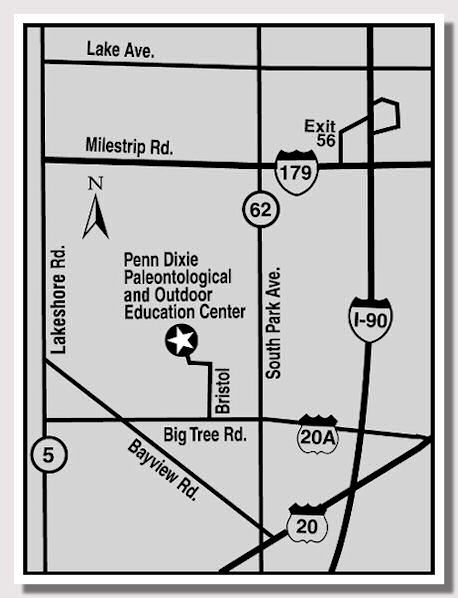
Location of Penn Dixie Paleontological and Outdoor Education Center in Hamburg, New York. Map provided by J. C. Bastedo
380 million years ago the region was 20 to 30 degrees south of the equator, and the actual Hamburg area was covered by a warm tropical sea providing an environment conducive for a variety of invertebrate and vertebrate animals. The shales and limestones that formed during this period preserved the remains of the diverse and abundant fauna that occupied these seas. The following discussion of the units present on the site begins with the Wanakah Shale at the north end through the West River Shale to the south. It was kindly provided by the Executive Director of Penn Dixie Education Center, Jerold Bastedo.
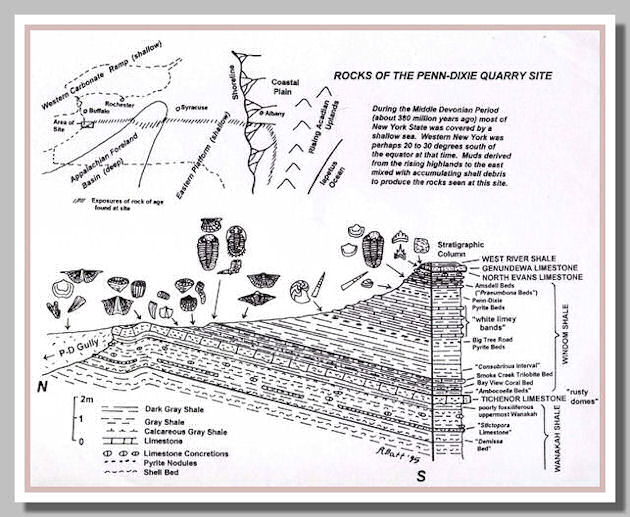
Stratigraphy of Penn Dixie quarry
The Wanakah Shale is a grey calcareous shale that weathers to a sticky clay. It is a popular area for fossil collecting (brachiopods, bryozoans, trilobites, gastropods, pelecypods, echinoderms, corals, sponges, ostracods, and some pyritized fossils).
The Tichenor Limestone (1.5 to 2 feet thick) has a pyrite-coated surface that exhibits a reddish-rusty color. This layer is often referred to as "crinoid heaven" due to the countless numbers of pelmatozoan columnals. The Tichenor Limestone contains corals, brachiopods, pelecypods, trilobites, bryozoans, and echinoderms, all of which are difficult to remove from the hard limestone.
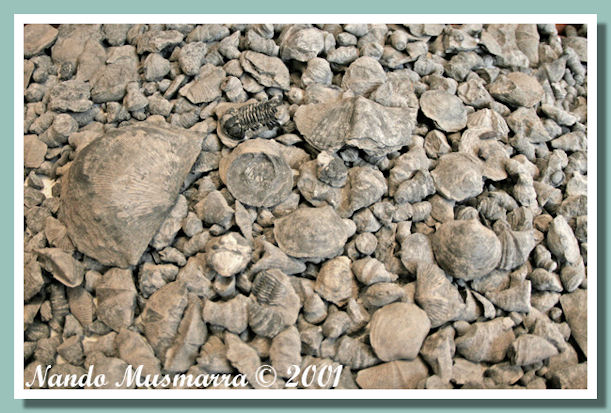
Fossil diversity in Devonian seas
The Windom Shale is a dark grey, calcareous mudstone with several thin argillaceous limestones, concretionary beds, phosphate nodules and sticky clay (Beuhler and Tesmer, 1963). The Penn Dixie site has the most complete exposure of Windom Shale in New York State, approximately 42 feet thick, that contains a variety of corals, brachiopods, pelmatozoan columnals, bryozoans, trilobites, gastropods, pelecypods, cephalopods, and more rarely fish remains, plant material, and blastoid and crinoid calyces. The upper Windom has a variety of pyritized fossils that include brachiopods, pelecypods, cephalopods, trilobites, and blastoids.
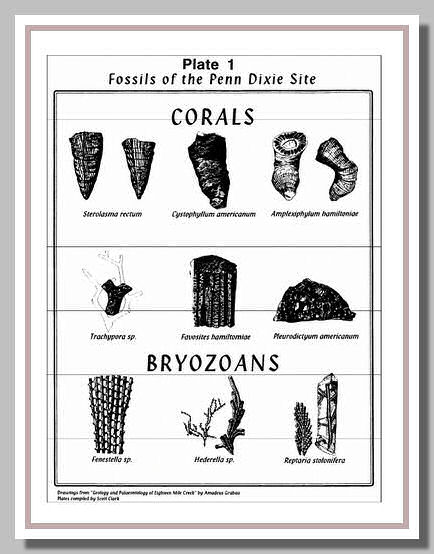
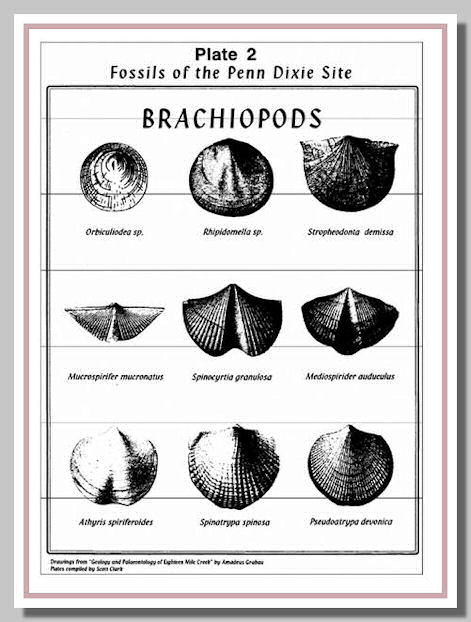
The North Evans Limestone is a dark grey crinoidal limestone that is 1.5 to 4 inches thick. Erosional lag concentrations of hiatus concretions, pelmatozoan fragments, conodonts, fish plates, teeth, and mandibles, along with some brachiopod valves, are present. Carbonized plant remains are also found in this unit.
The Genundewa Limestone is a nodular, dark grey to light grey poorly bedded limestone, which has been referred to as the "Styliolina Limestone." Carbonized wood can be frequently found, but other examples of the fauna are more difficult to obtain.
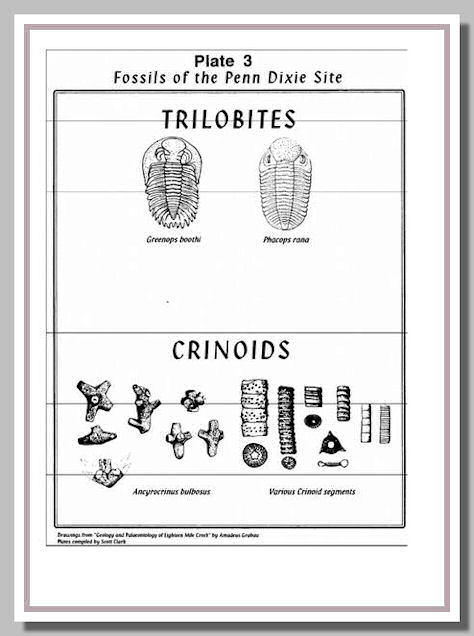
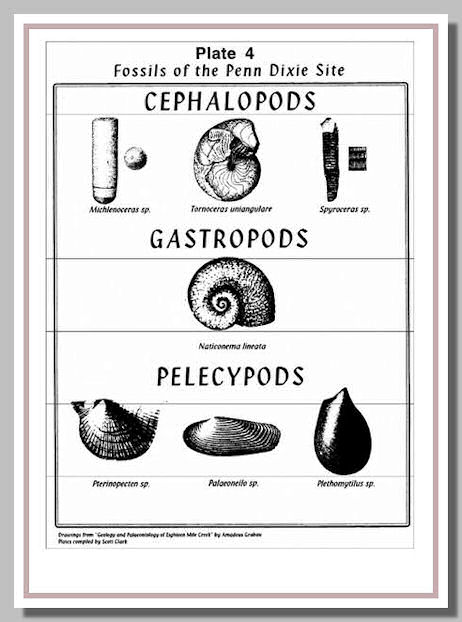
The West River Shale is dark grey to black in color. Most of this unit is covered by overburden at Penn Dixie. Conodonts, cephalopods, pelecypods, and fish remains have been reported from the West River Shale at other localities in western New York. In the Penn Dixie quarry it is easy to find the trilobite Phacops rana (especially enrolled specimens!) washed out of the shale after a good rainstorm. Also multiple complete trilobites on a slab are common in the quarry.
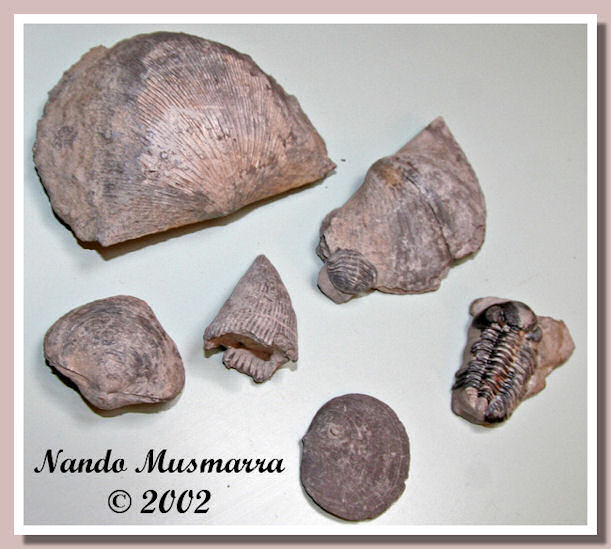
The site was purchased by the Town of Hamburg in 1995 to preserve the former quarry and its associated wetlands, saving one of the richest sites of 380-million-year-old Devonian fossils in the eastern United States. Now the site is owned and operated by The Hamburg Natural History Society, Inc. (HNHS), a non-profit educational corporation and by the Outdoor Education Center of Hamburg, New York. The society was founded to promote the study of the natural sciences, astronomy (a seismographic and climatological station are planned to be included in the center) and ornithology (there are more than 140 bird species nesting and living in the quarry), with a particular emphasis on field activities associated with the geological and biological sciences.
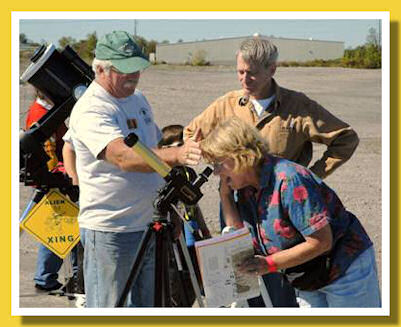
Visitors viewing solar flares and sunspots through filtered telescopes during the 8th Annual WNY Earth Science Day celebration at Penn Dixie in 2005. Photo provided by J. C. Bastedo.
Unlike conventional museums or research facilities, the Penn Dixie Site is an outdoor educational facility where visitors of all ages are encouraged to collect and take home the fossils. There is a small fee to collect in the quarry ($6 each adult; you can also join the Society for one year for $20 per individual or $35 per family and then collect for free as many times as you like).
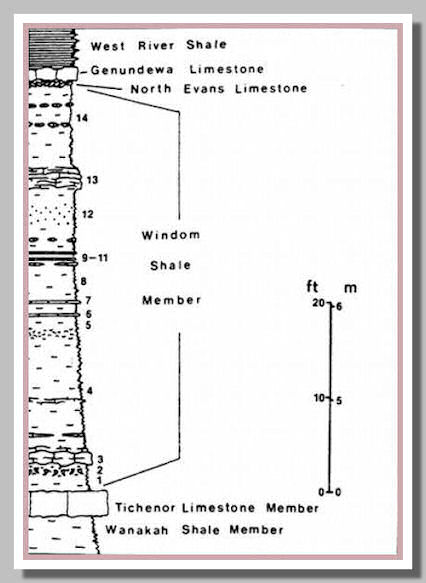
Stratigraphic units present at the Penn Dixie Site with the stratigraphic subdivisions of the Windom Shale Member:
1) Ambocoelia umbonata beds; 2) BayView coral bed; 3) Smoke Creek bed; 4) Barren shale interval; 5) Big Tree bed; 6, 7) A-B limestones; 8) Buffalo pyritic beds; 13) Amsdell bed; 14) upper Ambocoelia? praeumbona-bearing shales. (Modified from Brett and Baird, 1982).
The Society reprinted an exceptional old book, Geology and Paleontology of Eighteen Mile Creek by Amadeus W. Grabau. The book is very useful for identifying the Penn Dixie fossils. Grabau was a distinguished geologist and paleontologist, and the first professor of paleontology at Columbia University. He later moved to China where he became chief paleontologist of the National University of Peking. He was also closely connected with discoveries of Peking Man.
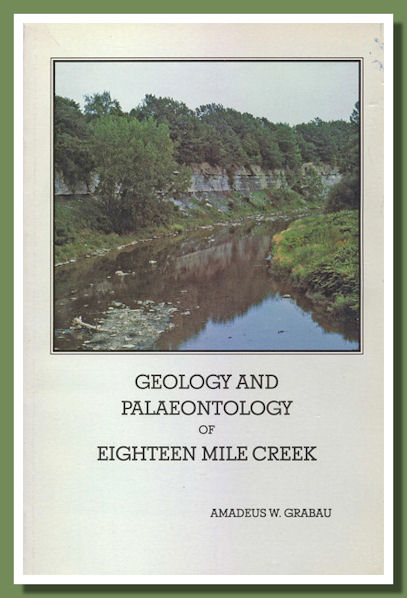
The Hamburg Natural History Society has republished Grabau's book on Devonian fossils of Eighteen Mile Creek.
The Executive Director of Penn Dixie Education Center is Jerold Bastedo. It is a good idea to contact him to arrange a visit to the quarry. Mr. Bastedo loves to have visitors from all around the world, and he will be happy to fix you up for a day to collect enrolled trilobites, beautiful spirifers, corals and other Devonian fossils. Penn Dixie staff and volunteer guides will direct visitors to the better collecting areas on the site. The Penn Dixie society website is http://www.penndixie.org/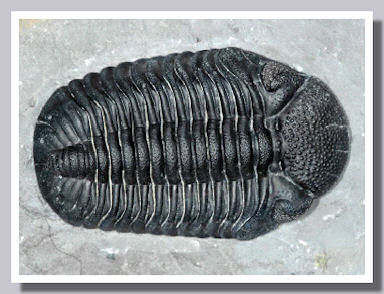
Phacops rana collected by Jon Luellen and prepared by Gerry Kloc. Collected from the Lower Windom Shale at Penn Dixie. The trilobite is 5 cm. Photo provided by J. C. Bastedo.
If you are planning a trip to the eastern United States, remember to include the area around Hamburg: good food and great Devonian fossils.
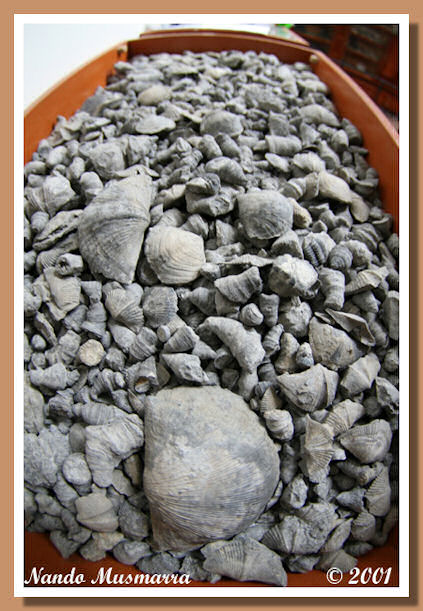
A day of collecting at Penn Dixie site
All the Plates were compiled by Scott Clark and provided by J. C. Bastedo
(Thanks to Mr J. Bastedo who very kindly sent us the part that describes the formations.)
Nando Musmarra - Diana Fattori © 1999-2009

